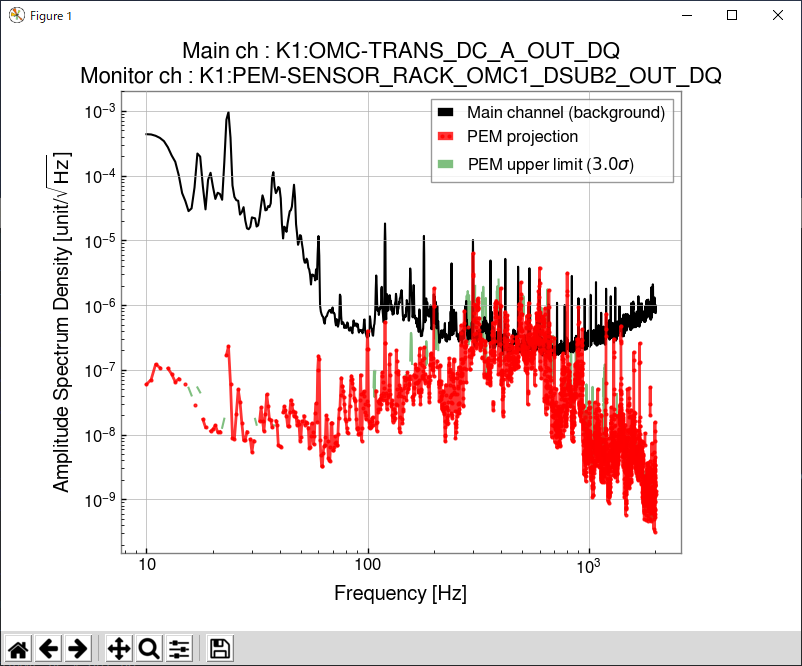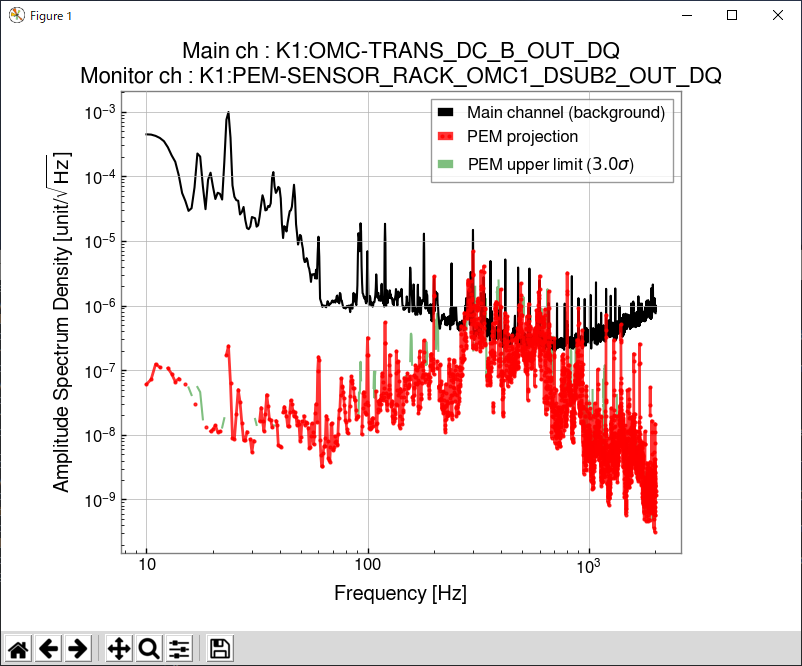Yokozawa, Washimi, Tomaru, T Tanaka, Michimura, Izumi,
During the PEM period in this after noon, we have done a few tests by locking the OMC to a single bounce interferometer beam off of ITMX to see what couplings may be there.
The tests were not quite complete since we have spent some hours trying to lock the full interferometer with no success. The PEM team will continue working on this topic, but here are some (preliminary) conclusions we were able to draw.
-
OMC does not show coupling from vibration excitation on the chamber legs when the light is not resonant
- We set the OMC length to a value where it does not resonate with the incoming light.
- Exciting the chamber legs by hand-tapping, we did not see appreciable contributions to OMC DCPDs at all.
- This indicates that the coupling mechanism involves with the resonating OMC and the DCPDs.
-
DCPD B shows a higher coupling to vibration excitation on the chamber legs than DCPD A by a factor of 10
- Excting a shaker nearby the OMC chamber at 100 Hz with an amplitude of 1,000 counts or so, we saw a clear linear coupling in DCPD B but not much in DCPD A for some reason
-
The ambient vibration acting on the chamber legs may not be sufficient to explain noises in at around 100Hz according the accelerometers installed in the vicinity.
- The PEM team will be investigating this further.
Note that Yoichi, whom we talked to over the phone today, suggested using the locked X arm instead of a single bounce off of ITMX. This way we could have minimized confusions from the polarization effect and mode-matching, perhaps. Next, when one does a similar measurement, he or she should consider doing this. Also, we have touched the OMMT1 and OSTM picomotors to center the light on the OMC QPDs.














